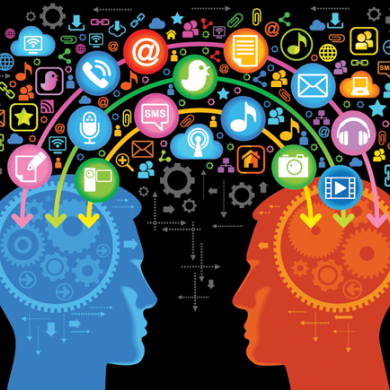These days I was reading something about the Co-creation. The Co-creation what actually it sounds like: design for the user, created hand-in-hand with the user. According to the Patrizia Bertini and Elsa Plumley share their experiences in co-creation at Foolproof, a London-based UX design agency.
Co-creation is defined by Prof. Thorsten and his colleagues at London Research and Consulting group, an emanation from the London School of Economics and Political science, as “an active, creative and social process, based on collaboration between producers and users, that is initiated by the firm to generate value for customers.” Gouillart, president and co-founder of the Experience Co-Creation Partnership, explains that “The idea of co-creation is to unleash the creative energy of many people, such that it transforms both their individual experience and the economics of the organization that enabled it.”
In the past decade, new technologies ranging from Twitter to customer service chat-windows have led to an increase in the quantity and quality of interactions between people and organizations. But listening to user feedback isn’t where the company-user interactions end. Today more than 50% od fortune 500 companies have made co-creation an integral part of their innovation strategy, as Andrew Welch—Chief Executive Officer of Y&R reports.
Yet in user experience design, most organizations take a traditional approach to user research and design, using a researcher to act as a middle-man between users, designers, and business stakeholders. Users are consulted in the process, but not given creative control over solutions.
Co-Creaation is an alternative, collaborative approach brings UX teams closer to their future users. It’s an approach that increases the user’s direct involvement; teams literally design concepts in collaboration with their end-users. In this article I will explore how this process of co-creation can ultimately improve the quality of output, and the end user’s experience.
The key to co-creation lies in engaging, working with, and empowering people to generate ideas and to collaboratively create concepts. Co-creation is based on the belief that the users’ presence is essential in the creative process, as the users provide insight into what is valuable to them. At its core, this means that co-creation is literally any process that brings together users and designers to work toward a shared goal. In practice, this often takes the form of a collaborative workshop in which business stakeholders, researchers, designers, and end-users explore a problem and generate solutions together, taking into account their different approaches, needs, and points of view. The end goal of co-creation is the same as that of research and concept design: to identify a solution that provides users with better experiences, and organizations with improved and innovative services.
The primary benefit to co-creation is the way in which it increase empathy among stakeholders and designers. In traditional research techniques, stakeholders observe users from a distance, behind a one-way mirror or via video link-up. Co-creation, on the other hand, forces businesses and designers to confront the realities of customer emotions – be that happiness, joy, anger, or frustration – and the motivations behind their behavior. This collaborative approach promotes constructive reflection and dialogue where all parties involved are equal, and working together towards a shared goal.
As a secondary benefit, co-creation processes are often more efficient than traditional design research. A well designed co-creation workshop forces all parties to discuss the problem and solutions together, and essentially combines the research period with the discovery and requirements-creation phases of a project. In addition, because designers are involved directly in uncovering requirements, they are better able to understand the reasons behind the requirements, which leads to better decision making during later design phases.

